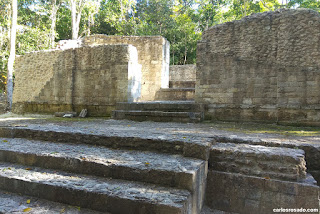El Rey (Cancun)
Last week Yesica and I made our way to Cancun as she has been promoted to manager (congratulations Yesi!). Anyway her apartment is really quite nice and the grounds look more like a resort than those of an apartment… in any case I think she will be quite happy here. We of course did not leave for anything other than getting groceries and cleaning supplies, but despite the beautiful lake size pool on the promises, this did not keep me from wishing I could go to the ocean and maybe even visit some of the archaeological sites nearby, even though they are of course closed to the public because of COVID.
Many visitors to Cancun take day trips to visit Chichen Itza as it is (understandably) for many one of those checklist sort of items visitors to the region are expected to do. Thus, for many visitors the very idea of a Maya archaeological site is so tangled-up with Chichen Itza that they have practically become synonyms. Some tourists are aware of the existence of other archaeological sites nearby such as Coba but few realize that archaeological sites exist in Cancun itself. Now, granted… sites such as “El Rey” or “El Meco” are nowhere nearly the size of sites such as Chichen Itza or Uxmal, but this does not mean that they are not worth visiting.
El Rey is located on kilometer 18 of Kukulcan blvd (right on the hotel zone) and the entrance fee is only 35 pesos, so visiting it should be a no brainer. Founded in the 12 century El Rey is a late post classic site whose main economic activity was fishing and trade. The architecture is consistent with other Mayan settlements along the coast of Quintana Roo, such as Tulum, San Gervasio, El Meco etc. The fact that this settlement was founded so late in the history of the Mayans of antiquity is interesting in itself and gives us some insight in to the way the Maya were likely living at the time of the arrival of the first europeans a few centuries later. Another thing that is quite interesting (as you can see in some of the photos) is that when in the site many of the enormous hotels of the hotel zone, along with telecommunication towers are clearly visible directly behind the prehispanic structures. It really makes you wonder what the Maya of the past would have thought of these behemoths of concrete, glass and metal. .










































